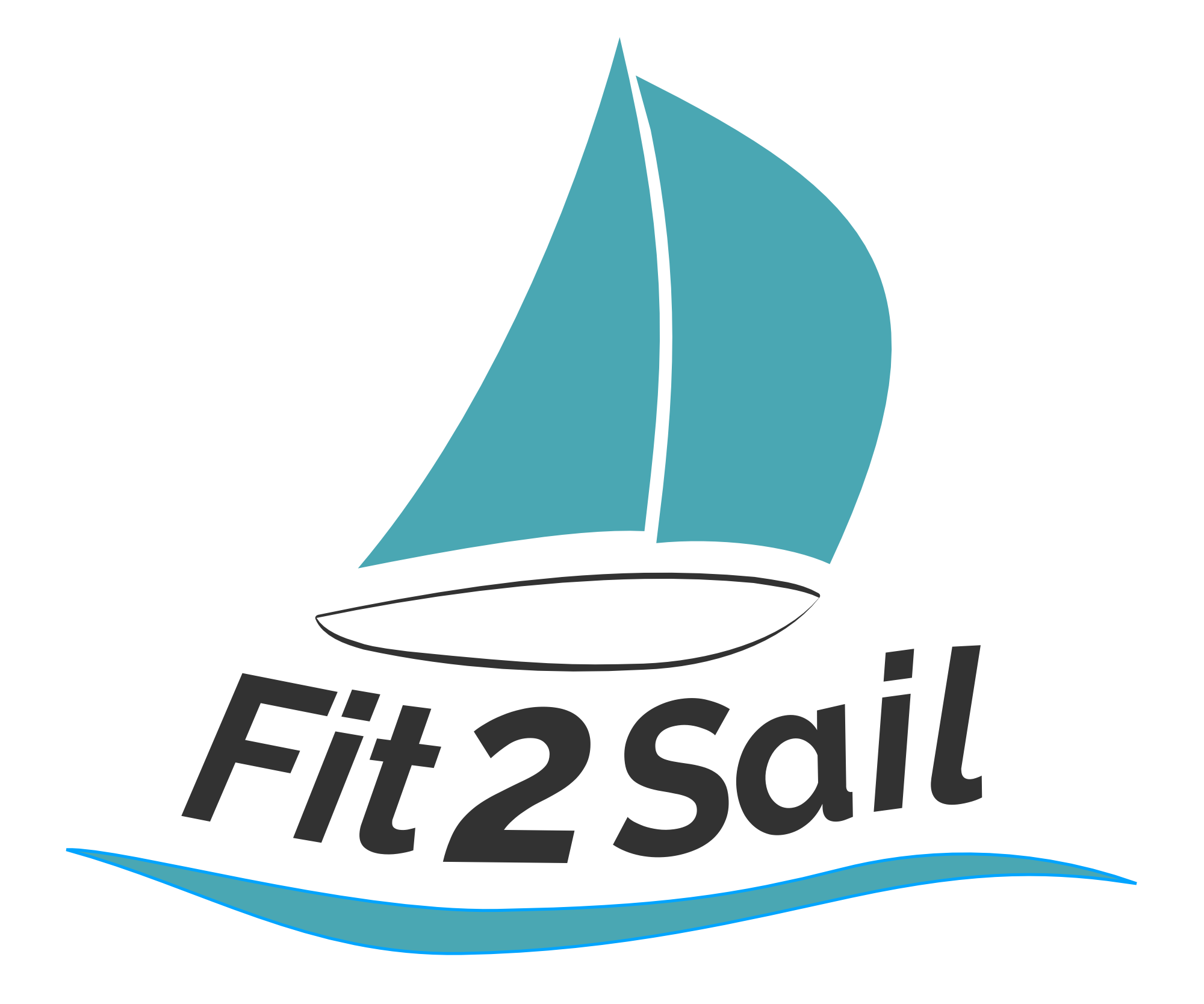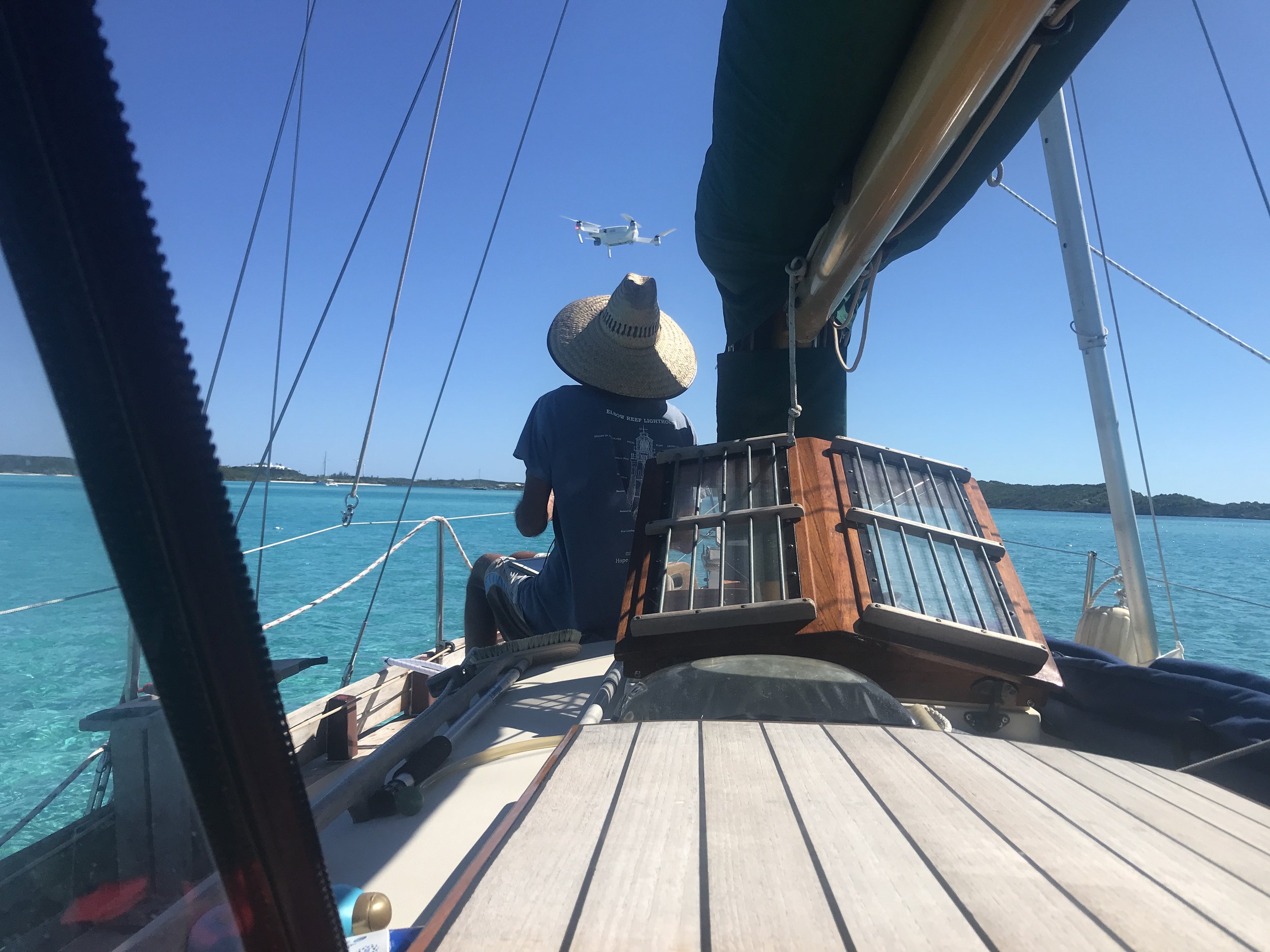DIYers Dilemma
As I write this, we’re sitting in Pipe Creek in the Exumas (central Bahamas), hiding from yet another strong cold front. It’s been a challenging winter in the Bahamas with lots of intense sessions of west-sector winds even down in the Exumas. We’ve got high hopes of being able to visit Cat Island and Andros but are starting to wonder if we’ll make it. We only have another 5 weeks in the Bahamas before our cruising permit expires . . . It’s not that we’re suffering, exactly, just that we’re getting itchy to move!
The lay of the land. Florida is to the west of Andros. Nassau (on the island of New Providence) is just visible.
We’re keeping busy. Jeremy’s learning to foil board, which was really his goal this winter. Friends on Halekai have joined us in the anchorage and we’ve had fun hanging out. The water is spectacular, the conch swing always a joy, counting the conch in the water under the boat a gratifyingly impossible exercise. I'll admit though that the veg bin is approaching empty, my creativity is failing, and our meals are getting monotonous. Not that I’m complaining about black bean and sweet potato tacos, mind you, but unless we get to move to a spot with provisions soon we’ll be down to black beans straight from the can over rice. The sum total of the veg bin is 3 onions, 1 head of garlic, 2 sweet potatoes, 2 Irish potatoes, and a head of cabbage. I’m rationing cheese and flour. Send good vibes, please.
Helmet, wet suit, and a little air. Go Jeremy go! (board session #4, people. The man can do ANYTHING!)
Artfully framed photo by Greg conveniently leaving out the hordes of people on the sand bar
Part of what we do out here is boat projects. Which leads me to the real subject of today’s post - the Diyers Dilemma.
Seth Godin recently had a blog about optimization vs maximization. “The work of optimization is finding the best set of tradeoffs,” he says, while “maximization . . . seeks the solution that ranks highest for just one goal.” So when doing any boat project, are we looking to maximize or optimize?
Maybe really you need to look at both together, as much as Seth might argue the futility of it. Hear me out.
We’re pretty committed DIY people. This stems largely from the fact that Jeremy, a trained engineer and inveterate tinkerer, can do almost anything, but it’s also shored up by our frugal natures. In general, going the DIY route has the potential to save you a whole lot of money. It also allows for better optimization.
(A warning. If I were the solo DIYer, I’d have the potential to cost myself a whole lot of money. My skills, anywhere outside of the kitchen or in a classroom, are rudimentary at best. In addition, I get frustrated fast when I don’t do a good job with something, so taking the time to learn in an overnight cram session would not be advised. Know your limitations!)
Boat projects require a mix of time, money, and quality. It’s my opinion that in order to optimize, you first need to figure out which one of these is the sticking point. Does this mean you’re maximizing that one? Maybe sometimes. Unfortunately, you’re highly unlikely to hit the magic trifecta.
It took 30 years to get Calypso in this shape. Lots of sailing meanwhile, but lots of time in the yard.
Time might be THE critical aspect because of a sailing season with friends. A passage you’re trying to make. A general feeling that you’re not getting any younger. Because the yard rates are about to quadruple.
Money might be THE critical aspect because there just isn’t more money available. You’ve already spent more than you wanted to. There are other claims on your limited dollars.
Quality might be THE critical aspect because it’s a matter of safety. Because it’s a precious labor of love. Because pride in finish.
Reinstalling the refinished bowsprit.
Whichever one you’re maximizing becomes the lens through which you evaluate projects. Even when doing it yourself. You can have something take less time and less money but it might be poorly executed, have something cost less and be high quality but take a stupid amount of time, or have something high quality in a short amount of time that costs the moon. Pick your poison.
For us, we’re really cognizant of the time factor. It’s the one aspect that you can’t access more of. Once time is gone, it’s gone. Which is why, sometimes, even the most committed DIYer (cough, Jeremy, cough), opts for hiring a project out. Yes, it’ll cost more. Chances are, unfortunately, it won’t be done to nearly the standard we expect. But it’ll get done. There just isn’t enough time in the day to do absolutely everything that needs to be done, at least not if we want to go cruising sometime in the next decade. Something has to give.
It’s not that we have endless money to throw at boat projects. If we did, we might be sailing a different boat, or might have hired out more projects, or might have bought new parts instead of spending time haunting Ebay. Sometimes time is more expensive than cash, is all.
Part of the problem with almost any boat project is that it’s rarely a simple endeavor. Way too often, what seems obvious and uncomplicated turns out to be a rabbit hole of “and then”. This is tough when you’re doing work yourself. It’s even harder when you’re trying to hire someone else to do the work. No matter how many times a yard has done a given project, they’ve probably never done it on your particular boat. And even if the yard (or you personally) have done that same project on a sister ship? I suppose if you’re able to have the actual boat yard where the actual boat was built do the work, there’s (hopefully) some guarantee they’ll be working at least a little less blindly . . . There are enough differences even in the same model boat built in the same factory that each project is unique. Heck, you can’t even reliably create the same cabinetry from one side of the boat to the other without a lot of measuring and templating.
Every single one of the 28 stanchion posts is slightly different.
Choosing which boat project to outsource can be an important factor in the quest for optimization. Some projects should be relatively straightforward. Others, by their very nature, are more challenging. Trying to hire someone else to build the new galley on Calypso? Would have been impossible. The number of iterations, of decision points during the build, the endless measuring, templating, cutting, fitting, trimming, refitting . . . trying to explain what we needed to someone else when we didn’t have a clear idea in our heads about it in the first place would have been a nightmare for all involved.
Still, even when outsourcing a pretty straightforward project, oversight is required. This can be very frustrating. You spend good money to hire a professional to do a job but you need to make sure they’ve done the job correctly, which itself requires some knowledge. Boat ownership is not a hands-off affair. There’s a fine line between micro-managing and oversight, and my bet is what you consider regular oversight might feel like micro-managing to whomever you hired. Not ideal for sure.
There is a fourth factor in the whole “hiring it out” conversation. Trust. Anytime you hire someone to work on your boat, you’re trusting that they’ll do at least a competent job. After all, you’ve done the research and chosen the contractor based on reputation. Can’t you just trust that and go o your merry way, confident that the job will be done to the high standard you expected? Sorry. Regardless of the yard or contractor, you are responsible for all the work done on your boat. A warranty doesn’t do you a whole lot of good once you’ve sailed away and shifted to a new location.
What we have found, over and over again, is that we’re most satisfied with work we’ve done ourselves. Learning to let go, to accept “good enough”, is a hard enough dilemma when it’s your own handiwork - it’s extra hard when you’ve paid a handsome sum for a professional to do the job. Nobody will work on your boat or take the same care with her as you will. Nobody. Doing work on our boats ourselves is our way of optimizing.
Flying the drone over Pipe Creek
But the time factor is real. At some point, you just need to go cruising.







